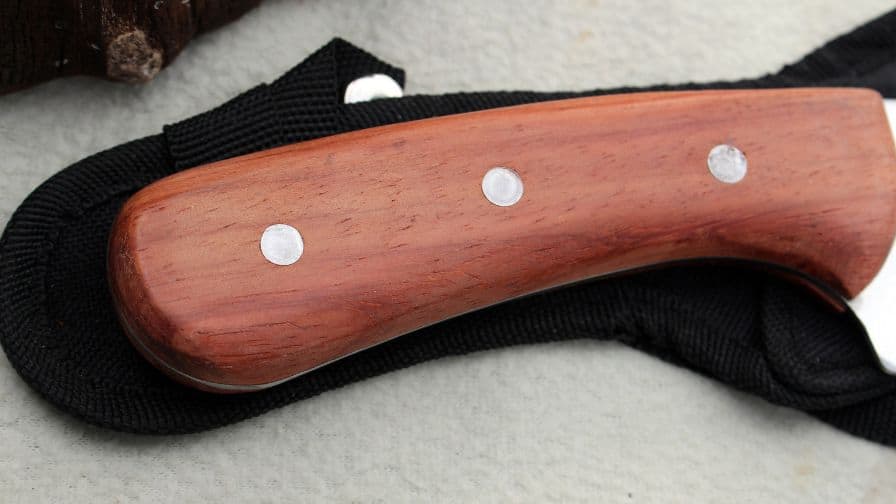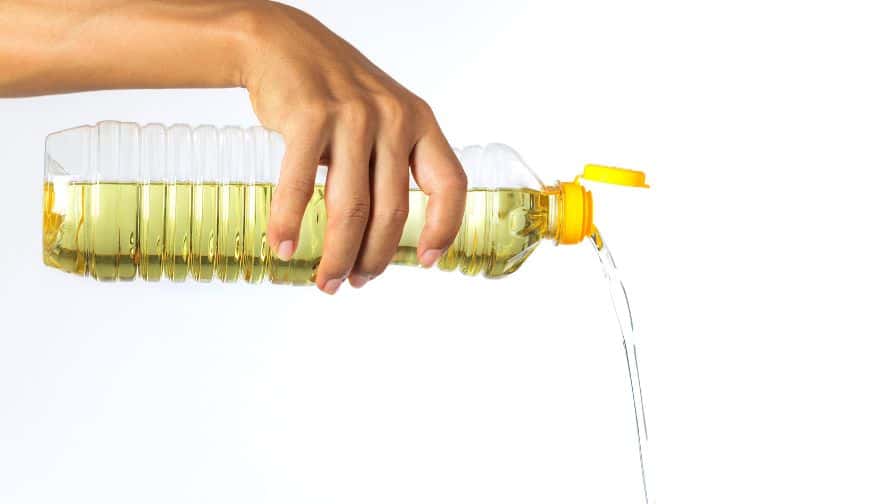
A well-maintained knife is a beautiful thing. Not only does it perform better and last longer, but it also just looks nicer. If you’re looking to give your knives a little TLC, you may be wondering what the best oil for knife handles is. In this article, we’ll take a look at some of the most popular options and discuss their pros and cons. So whether you’re looking to keep your kitchen knives in top condition or want to give your hunting knives a makeover, read on for some helpful advice!
What Is The Best Oil For Knife Handles And Why
The best oil for knife handles is mineral oil. When it comes to caring for your knives, one of the most important things you can do is keep the handles properly oiled. This will help protect them from water damage, staining and wear. But with so many different oils on the market, it can be hard to know which one is best for your knives.
Here are a few things to keep in mind when choosing an oil for your knife handles:
- The type of wood the handle is made from. Some woods are naturally more oily than others and don’t need as much help from an added oil.
- How often you use your knives. If you use them frequently, you’ll want an oil that penetrates deeply and won’t need to be reapplied as often.
- The look you want for your knives. Some oils will darken the wood, while others will leave it looking natural.
- Your budget. Some oils are more expensive than others, but usually, the higher quality ones are worth the extra cost.
With all of that in mind, the best oil for knife handles is mineral oil. This is a popular choice for knife handles because it’s affordable and does a good job of penetrating the wood. It’s also food safe, so if you use your knives for cooking, this is a good option.
What Oils Are Good For Knives?
The best type of oil for a knife is one that will protect the blade and keep it sharp. There are many different types of oils available, but not all of them are created equal. Here is a look at some of the best oils for knives:
1. Mineral oil – This type of oil is often used on cutting boards and other kitchen surfaces. It is safe for use on knives and will help to keep the blade from rusting.
2. Tung oil– This oil is derived from the nut of the tung tree. It is a natural protectant and will help to keep your knife blade from rusting.
3. Linseed oil– This oil is extracted from flax seeds. It has a high level of protection against rust and will also help to keep your knife sharp.
4. KUROBARA HAMONO TSUBAKI Pure Tsubaki Camellia Oil – This oil is made from the seeds of camellia flowers. It is a natural protectant against rust and will also help to keep your knife blade from drying out.
So there you have it, some of the best oils for knives. Be sure to choose the right oil for your knife and always store it in a cool, dry place. With proper care, your knife will last you a lifetime.
Subscribe to Moat Cottage Homesteading
What Kind Of Mineral Oil Do You Use For Knives?
The best type of mineral oil to use for knives is food-grade mineral oil. This type of mineral oil is safe to use on food-preparation surfaces and will not cause any harm if ingested.
Mineral oil is a natural lubricant that can help keep your knives sharp and prevent rusting. It is important to apply a thin layer of mineral oil to your knives after every use, and to store them in a dry place. If you live in a humid climate, it is also a good idea to apply a thin layer of mineral oil to your knives before storing them. This will help keep them from rusting.
Is Olive Oil Good For Knife Handles?
Extra-virgin olive oil is great for dressing salads and cooked vegetables, but it’s not the best choice for lubricating a knife handle. Over time, the oil can become rancid and leave an unpleasant smell on your hands.
A better option is mineral oil, which is inexpensive and won’t go bad. Apply a drop or two to the handle and rub it in with a soft cloth. You’ll need to reapply the oil every few months to keep the handle in good condition.
Can You Use Vegetable Oil On A Wooden Knife Handle?

No, you shouldn’t use vegetable oil on a wooden knife handle. The oil can go rancid and cause the wood to rot. Plus, it’s a pain to clean off the oil and it will make your knife slippery. If you’re looking to protect your wooden knife handle, use mineral oil instead. It won’t go bad and it won’t make your knife slippery.
The Benefits Of Using A Good Quality Knife Oil
There are many benefits of using a good quality knife oil. A good quality knife oil will help to protect your knives from rust and corrosion. It will also help to keep your knives working smoothly and efficiently.
One benefit of using a good quality knife oil is that it can help to protect your knives from rust. Rust can cause your knives to become dull and less effective. It can also cause your knives to break or chip. A good quality knife oil can help to prevent rust from forming on your knives.
Another benefit of using a good quality knife oil is that it can help to keep your knives working smoothly. If your knives are not well lubricated, they can become hard to use. A good quality knife oil can help to keep your knives working smoothly and efficiently.
A good quality knife oil will also help to increase the lifespan of your knives. By regularly applying a good quality knife oil, you will be able to keep your knives in good condition for many years to come.
So, if you are looking for a way to protect your knives and increase their lifespan, then you should consider using a good quality knife oil.
What Wood Is Best For Knife Handles?
There are many types of wood that can be used for knife handles, but some are better than others. The best woods for knife handles are hardwoods because they’re strong and durable. Some of the best hardwoods for knife handles include oak, maple, and walnut. Each type of wood has its own unique grain pattern, so you can choose the one that you think looks best. Just make sure that the wood is properly finished so it will withstand years of use.
What Are The Different Parts Of A Knife Called?
Subscribe to France Byron
A knife is a tool with a cutting edge or blade, often used for slicing or chopping food. It can have one or more blades, and the blade may be fixed or folding. The handle is usually made of wood, plastic, or metal.
Different parts of a knife are called by different names, depending on the design of the knife. The basic parts of most knives are the blade, handle, bolster, and guard.
The blade is the sharpened part of the knife that does the cutting. It is usually made of steel or other metals, but can also be made of ceramic or other materials.
The handle is the part of the knife that you hold in your hand. It can be made of wood, plastic, metal, or other materials.
The bolster is the thick part of the knife that joins the blade to the handle. It can help to balance the knife and protect your hand from the cutting edge.
The guard is a piece of metal or other material that covers part of the blade to protect your hand from the cutting edge.
There are many other parts of a knife, such as the pommel, ricasso, and choil, but these are not found on all knives.
Knives come in many different shapes and sizes, and can be used for a variety of tasks. Whether you’re slicing bread, chopping vegetables, or filleting a fish, there’s a knife that’s just right for the job.
Knife Maintenance Tips
1. Keep your knives sharp. A sharp knife is a safe knife. A dull knife is more likely to slip and cause an accident.
2. Use a cutting board. Cutting on a hard surface can damage your knives and is more likely to cause an accident.
3. Be careful with your fingers. Keep them away from the blade when cutting.
4. Don’t try to catch a falling knife. Let it fall and then pick it up.
5. Store your knives safely. Keep them in a drawer or block where they can’t fall and hurt someone.
following these simple tips will help you keep your knives in good condition and prevent accidents.



